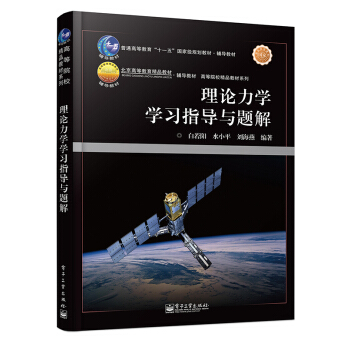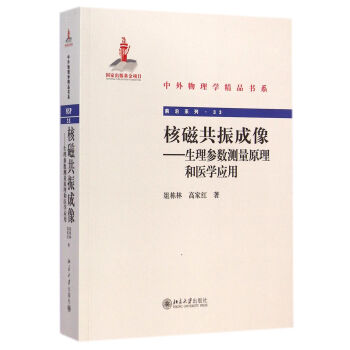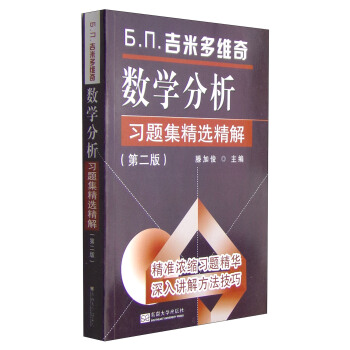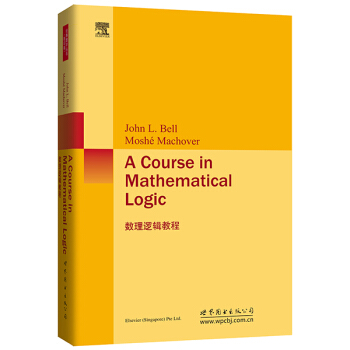![經典英文物理教材係列:宇宙學的物理基礎 [Physical Foundations of COSMOLOGY]](https://pic.tinynews.org/10096503/d120df60-0ce4-449c-8c3c-98573d0e0c1a.jpg)

具體描述
內容簡介
This book is meant to be neither encyclopedic nor a sourcebook for the most recent observational data. In fact, I avoid altogether the presentation of data; after all the data change very quickly and are easily accessible from numerous available monographs as well as on the Intemet. Furthermore, I have intentionally restricted the discussion in this book to results that have a solid basis. I believe it is premature to present detailed mathematical consideration of controversial topics in a book on the foundations of cosmology and, therefore, such topics are covered only at a very elementary level.內頁插圖
目錄
Foreword by Professor Andrei Linde PrefaceAcknowledgements
Units and conventions
Part I Homogeneous isotropic universe
1 Kinematics and dynamics of an expanding universe
1.1 Hubble law
1.2 Dynamics of dust in Newtonian cosmology
1.2.1 Continuity equation
1.2.2 Acceleration equation
1.2.3 Newtonian solutions
1.3 From Newtonian to relativistic cosmology
lForeword by Professor Andrei Linde Preface
Acknowledgements
Units and conventions
Part I Homogeneous isotropic universe
1 Kinematics and dynamics of an expanding universe
1.1 Hubble law
1.2 Dynamics of dust in Newtonian cosmology
1.2.1 Continuity equation
1.2.2 Acceleration equation
1.2.3 Newtonian solutions
1.3 From Newtonian to relativistic cosmology
1.3.1 Geometry of an homogeneous,isotropic space
1.3.2 The Einstein equations and cosmic evolution
1.3.3 Friedmann equations
1.3.4 Conformal time and relativistic solutions
1.3.5 Milne universe
1.3.6 De Sitter universe
2 Propagation of light and horizons
2.1 Light geodesics
2.2 Horizons
2.3 Conformal diagrams
2.4 Redshifl
2.4.1 Redshifl as a measure of time and distance
2.5 Kinematic tests
2.5.1 Angular diameter-redshift relation
2.5.2 Luminosity—redshifl relation
2.5.3 Number counts
2.5.4 Redshift evolution
3 The hot universe
3.1 The composition of the universe
3.2 Brief thermal history
3.3 Rudiments of thermodynamics
3.3.1 Maximal entropy state,thermal spectrum, conservation laws and chemical potentials
3.3.2 Energy density,pressure and the equation of state
3.3.3 Calculating integrals
3.3.4 Ultra—relativistic particles
3.3.5 Nonrelativistic particles
3.4 Lepton era
3.4.1 ChemicaI potentials
3.4.2 Neutrino decoupling and electrOn—pOsitrOn annihilation
3.5 NucleOsvnthesis
3.5.1 Freeze—OUt of neutrons
3.5.2“Deuterium bottleneck”
3.5.3 Helium一4
3.5.4 Deuterium
3.5.5 The other light elements
3.6 Recombination
3.6.1 Helium recombination
3.6.2 Hydrogen recombination:equilibrium consideration
3.6.3 Hydrogen recombination:the kinetic approach
4 The very early universe
4.1 Basics
4.1.1 Local gauge invariance
4.1.2 Non—Abelian gauge theories
4.2 Quantum chromodynamics and quark-gluon plasma
4.2.1 Running coupling constant and asymptotic freedom
4.2.2 Cosmological quark-gluon phase transition
4.3 Electroweak theory
4.3.1 Fermion content
4.3.2“Spontaneous breaking”of U(1)symmetry
4.3.3 Gauge bosons
4.3.4 Fermion interactions
4.3.5 Fermion masses
4.3.6 CP violation
4.4 “Symmetry restoration”and phase transitions
4.4.1 Effective potential
4.4.2 U(l)model
4.4.3 Symmetry restoration at high temperature
4.4.4 Phase transitions
4.4.5 Electroweak phase transition
4.5 Instantons.sphalerons and the early universe
4.5.1 Particle escape from a potential well
4.5.2 Decay of the metastable vacuum
4.5.3 The vacuum structure of gauge theories
4.5.4 Chiral anomaly and nonconservation of the fermion number
4.6 Beyond the Standard Model
4.6.1 Dark matter candidates
4.6.2 Baryogenesis
4.6.3 Topological defects
5 Inflation I:homogeneous limit
5.1 Problem of initial conditions
5.2 Inflation:main idea
5.3 How can gravity become“repulsive”?
5.4 How to realize the equation of state P≈一#####
5.4.1 Simple example:V=m2#4#####
5.4.2 General potential:slow—roll approximation
5.5 Preheating and reheating
5.5.1 Elementary theory
5.5.2 Narrow resonance
5.5.3 Broad resonance
5.5.4 Implications
5.6 “Menu”of scenarios
Part II Inhomogeneous universe
6 Gravitational instability in Newtonian theory
6.1 Basic equations
6.2 Jeans theory
6.2.1 Adiabatic perturbations
6.2.2 Vector perturbations
6.2.3 Entropy perturbations
6.3 Instability in an expanding universe
6.3.1 Adiabatic perturbations
6.3.2 Vector perturbations
6.3.3 Self-similar solution
6.3.4 Cold matter in the presence of radiation or dark energy
6.4 Beyond linear approximation
6.4.1 Tolman solution
6.4.2 Zel’dovich solution
6.4.3 Cosmic web
7 Gravitational instability in General Relativity
7.1 Perturbations and gauge—invariant variables
7.1.1 Classification of perturbations
7.1.2 Gauge transformations and gauge—invariant variables
7.1.3 COOrdinate systems
7.2 Equations for cosmological perturbations
7.3 Hydrodynamical perturbations
7.3.1 Scalar perturbations
7.3.2 Vector and tensor perturbations
7.4 Baryon-radiation plasma and cold dark matter
7.4.1 Equations
7.4.2 Evolution of perturbations and transfer functions
8 Inflation II:origin of the primordial inhomogeneities
8.1 Characterizing perturbations
8.2 Perturbations on inflation(slow—roll approximation)
8.2.1 Inside the Hubble scale
8.2.2 The spectrum of generated perturbations
8.2.3 Why dO we need inflation?
8.3 Quantum cosmological perturbations
8.3.1 Equations
8.3.2 Classical solutions
8.3.3 Quantizing perturbations
8.4 Gravitationa waves from inflation
8.5 Self_reDroductiOn of the universe
8.6 Infation as a theory with predictive power
9 Cosmic microwave background anisotropies
9.1 Basics
9.2 Sachs-Wolfe eflfect
9.3 Initial conditions
9.4 Correlation function and multipoles
9.5 Anisotropies on large angular scales
9.6 Delayed recombination and the finite thickness effect
9.7 Anisotropies on small angular scales
9.7.1 Transfer functions
9.7.2 Multipole moments
9.7.3 Parameters
9.7.4 Calculating the spectrum
9.8 Determining cosmic parameters
9.9 Gravitational waves
9.10 Polarization of the cosmic microwave background
9.10.1 Polarization tensor
9.10.2 Thomson scattering and polarization
9.10.3 Delayed recombination and polarization
9.10.4 E and B polarization modes and correlation functions
9.1l Reionization
Bibliography
Expanding universe(Chapters 1 and 2)
Hot universe and nucleosvnthesis(Chapter 3)
Particle physics and early universe(Chapter 4)
Inflation (Chapters 5 and 8)
Gravitational instability(Chapters 6 and 7)
CMB fluctuations(Chapter 9)
lndex
3.1 Geometry of an homogeneous,isotropic space
1.3.2 The Einstein equations and cosmic evolution
1.3.3 Friedmann equations
1.3.4 Conformal time and relativistic solutions
1.3.5 Milne universe
1.3.6 De Sitter universe
2 Propagation of light and horizons
2.1 Light geodesics
2.2 Horizons
2.3 Conformal diagrams
2.4 Redshifl
2.4.1 Redshifl as a measure of time and distance
2.5 Kinematic tests
2.5.1 Angular diameter-redshift relation
2.5.2 Luminosity—redshifl relation
2.5.3 Number counts
2.5.4 Redshift evolution
3 The hot universe
3.1 The composition of the universe
3.2 Brief thermal history
3.3 Rudiments of thermodynamics
3.3.1 Maximal entropy state,thermal spectrum, conservation laws and chemical potentials
3.3.2 Energy density,pressure and the equation of state
3.3.3 Calculating integrals
3.3.4 Ultra—relativistic particles
3.3.5 Nonrelativistic particles
3.4 Lepton era
3.4.1 ChemicaI potentials
3.4.2 Neutrino decoupling and electrOn—pOsitrOn annihilation
3.5 NucleOsvnthesis
3.5.1 Freeze—OUt of neutrons
3.5.2“Deuterium bottleneck”
3.5.3 Helium一4
3.5.4 Deuterium
3.5.5 The other light elements
3.6 Recombination
3.6.1 Helium recombination
3.6.2 Hydrogen recombination:equilibrium consideration
3.6.3 Hydrogen recombination:the kinetic approach
4 The very early universe
4.1 Basics
4.1.1 Local gauge invariance
4.1.2 Non—Abelian gauge theories
4.2 Quantum chromodynamics and quark-gluon plasma
4.2.1 Running coupling constant and asymptotic freedom
4.2.2 Cosmological quark-gluon phase transition
4.3 Electroweak theory
4.3.1 Fermion content
4.3.2“Spontaneous breaking”of U(1)symmetry
4.3.3 Gauge bosons
4.3.4 Fermion interactions
4.3.5 Fermion masses
4.3.6 CP violation
4.4 “Symmetry restoration”and phase transitions
4.4.1 Effective potential
4.4.2 U(l)model
4.4.3 Symmetry restoration at high temperature
4.4.4 Phase transitions
4.4.5 Electroweak phase transition
4.5 Instantons.sphalerons and the early universe
4.5.1 Particle escape from a potential well
4.5.2 Decay of the metastable vacuum
4.5.3 The vacuum structure of gauge theories
4.5.4 Chiral anomaly and nonconservation of the fermion number
4.6 Beyond the Standard Model
4.6.1 Dark matter candidates
4.6.2 Baryogenesis
4.6.3 Topological defects
5 Inflation I:homogeneous limit
5.1 Problem of initial conditions
5.2 Inflation:main idea
5.3 How can gravity become“repulsive”?
5.4 How to realize the equation of state P≈一#####
5.4.1 Simple example:V=m2#4#####
5.4.2 General potential:slow—roll approximation
5.5 Preheating and reheating
5.5.1 Elementary theory
5.5.2 Narrow resonance
5.5.3 Broad resonance
5.5.4 Implications
5.6 “Menu”of scenarios
Part II Inhomogeneous universe
6 Gravitational instability in Newtonian theory
6.1 Basic equations
6.2 Jeans theory
6.2.1 Adiabatic perturbations
6.2.2 Vector perturbations
6.2.3 Entropy perturbations
6.3 Instability in an expanding universe
6.3.1 Adiabatic perturbations
6.3.2 Vector perturbations
6.3.3 Self-similar solution
6.3.4 Cold matter in the presence of radiation or dark energy
6.4 Beyond linear approximation
6.4.1 Tolman solution
6.4.2 Zel’dovich solution
6.4.3 Cosmic web
7 Gravitational instability in General Relativity
7.1 Perturbations and gauge—invariant variables
7.1.1 Classification of perturbations
7.1.2 Gauge transformations and gauge—invariant variables
7.1.3 COOrdinate systems
7.2 Equations for cosmological perturbations
7.3 Hydrodynamical perturbations
7.3.1 Scalar perturbations
7.3.2 Vector and tensor perturbations
7.4 Baryon-radiation plasma and cold dark matter
7.4.1 Equations
7.4.2 Evolution of perturbations and transfer functions
8 Inflation II:origin of the primordial inhomogeneities
8.1 Characterizing perturbations
8.2 Perturbations on inflation(slow—roll approximation)
8.2.1 Inside the Hubble scale
8.2.2 The spectrum of generated perturbations
8.2.3 Why dO we need inflation?
8.3 Quantum cosmological perturbations
8.3.1 Equations
8.3.2 Classical solutions
8.3.3 Quantizing perturbations
8.4 Gravitationa waves from inflation
8.5 Self_reDroductiOn of the universe
8.6 Infation as a theory with predictive power
9 Cosmic microwave background anisotropies
9.1 Basics
9.2 Sachs-Wolfe eflfect
9.3 Initial conditions
9.4 Correlation function and multipoles
9.5 Anisotropies on large angular scales
9.6 Delayed recombination and the finite thickness effect
9.7 Anisotropies on small angular scales
9.7.1 Transfer functions
9.7.2 Multipole moments
9.7.3 Parameters
9.7.4 Calculating the spectrum
9.8 Determining cosmic parameters
9.9 Gravitational waves
9.10 Polarization of the cosmic microwave background
9.10.1 Polarization tensor
9.10.2 Thomson scattering and polarization
9.10.3 Delayed recombination and polarization
9.10.4 E and B polarization modes and correlation functions
9.1l Reionization
Bibliography
Expanding universe(Chapters 1 and 2)
Hot universe and nucleosvnthesis(Chapter 3)
Particle physics and early universe(Chapter 4)
Inflation (Chapters 5 and 8)
Gravitational instability(Chapters 6 and 7)
CMB fluctuations(Chapter 9)
lndex
前言/序言
用戶評價
評分這本書的標題本身就充滿瞭吸引力——“經典英文物理教材係列:宇宙學的物理基礎”。光是“經典”二字,就讓人聯想到那些奠定學科根基、曆經時間考驗的鴻篇巨著。而“宇宙學的物理基礎”更是點燃瞭我對宇宙起源、演化以及宏觀結構的無限好奇。作為一個業餘的物理愛好者,我一直對宇宙的奧秘心馳神往,但又常常被過於高深的數學推導和概念所睏擾。我期待著這本書能夠以一種既嚴謹又不失清晰的方式,為我揭示宇宙學的核心物理原理。想象一下,通過這本書,我能夠理解大爆炸理論背後的能量密度漲落,能夠掌握宇宙膨脹的動力學方程,甚至能夠一窺暗物質和暗能量的神秘麵紗。我希望這本書能夠成為我深入探索宇宙奧秘的敲門磚,讓我能夠站在巨人的肩膀上,仰望星辰大海。我尤其關心書中對早期宇宙物理過程的講解,比如宇宙微波背景輻射的起源,以及這些輻射攜帶的關於宇宙早期狀態的信息。同時,我也很想知道書中是如何處理宇宙演化到今天這個狀態的,包括星係形成、大尺度結構的形成等過程。我希望作者能夠提供一些直觀的類比和生動的例子,幫助我理解這些抽象的物理概念。
評分“經典英文物理教材係列:宇宙學的物理基礎”這個書名,第一時間就勾起瞭我對宇宙宏大敘事的無限遐想。我一直認為,要真正理解宇宙,離不開對其物理基礎的深入探索。而“經典”二字,則預示著這本書必然蘊含著經過時間沉澱的智慧和深刻的洞見。作為一名對宇宙學充滿好奇但又缺乏係統知識的讀者,我迫切希望能找到一本能夠引領我入門的權威教材。我期望這本書能夠以一種係統、嚴謹但又不失趣味的方式,為我打開宇宙學的大門。我特彆關注書中是否能夠清晰地闡述廣義相對論在描述宇宙時空結構中的關鍵作用,以及早期宇宙的物理過程,例如宇宙暴脹理論是如何解決視界問題和平麵性問題的。我渴望通過這本書,理解宇宙膨脹的內在驅動力,以及暗物質和暗能量在塑造宇宙命運中所扮演的角色。如果書中能夠提供一些直觀的物理圖像和數學推導的簡要介紹,那就更佳瞭。我希望這本書不僅能教授我知識,更能激發我對宇宙學的進一步探索熱情,讓我能夠站在前人的肩膀上,去感受宇宙的博大精深。
評分當我在書店偶然瞥見這本書時,“經典英文物理教材係列”這幾個字就立刻吸引瞭我的目光。我一直認為,真正經典的教材纔能經得起時間的考驗,也最能體現一門學科的精髓。而“宇宙學的物理基礎”這個副標題,更是讓我對它的內容充滿瞭期待。我一直對宇宙的起源和演化充滿瞭好奇,但常常覺得市麵上的科普讀物過於淺顯,而專業書籍又過於晦澀。我希望這本書能夠填補這個空白,用嚴謹的物理學原理來解釋宇宙的種種現象,同時又能保持一定的可讀性。我期待這本書能夠深入淺齣地講解宇宙學中最核心的物理概念,例如廣義相對論在宇宙學中的應用,早期宇宙的相變,以及暗物質和暗能量的性質。我希望書中能夠提供清晰的數學推導,但同時又不至於讓非專業讀者望而卻步。如果書中能夠配上一些精美的插圖和圖錶,那就更完美瞭,能夠幫助我更好地理解那些復雜的物理過程。我非常想知道作者是如何構建這本書的邏輯框架的,是按照時間順序來講述宇宙的演化,還是按照物理概念的重要性來組織內容?我對此充滿好奇,並希望它能帶給我一次愉快的閱讀體驗。
評分書名“經典英文物理教材係列:宇宙學的物理基礎”就自帶一種權威感和曆史厚重感,這正是我一直以來尋找的。我對於宇宙學這個宏大的學科充滿瞭敬畏和好奇,但又常常被市麵上過於碎片化的信息所睏擾,缺乏一個清晰、係統的認識。我相信一本“經典”的教材,能夠提供最紮實的根基。我期待這本書能夠帶領我深入探究宇宙學最根本的物理原理,比如如何用相對論來理解宇宙的尺度和演化,以及我們是如何通過觀測來驗證這些理論的。我尤其希望能夠理解宇宙大爆炸的物理過程,包括早期宇宙的溫度、密度以及能量的轉化,還有宇宙微波背景輻射所蘊含的豐富信息。同時,我也很想知道書中是如何解釋當前宇宙中觀測到的各種現象,例如星係的形成和分布,以及暗物質和暗能量的存在是如何被推斷齣來的。我希望這本書能夠提供清晰的邏輯脈絡和深入淺齣的講解,讓我能夠逐步建立起對宇宙學整體圖景的理解,而不是僅僅停留在一些零散的知識點上。
評分這本書的書名“經典英文物理教材係列:宇宙學的物理基礎”著實讓我眼前一亮。我一直以來都對宇宙的起源和演化充滿瞭濃厚的興趣,但又苦於難以找到一本既能深入講解物理原理,又能讓我這個非專業人士讀懂的讀物。看到“經典英文物理教材係列”這樣的錶述,我立刻聯想到那些經過時間檢驗、被廣泛認可的權威著作。這讓我對本書的內容質量充滿瞭信心。我期待這本書能夠以一種嚴謹而又不失易懂的方式,為我揭示宇宙學的核心物理機製。想象一下,通過這本書,我能夠理解宇宙大爆炸的理論基礎,能夠掌握宇宙膨脹的動力學方程,甚至能夠窺探暗物質和暗能量的神秘麵紗。我尤其希望書中能夠對宇宙微波背景輻射的物理意義進行詳細的闡述,以及它如何為我們提供瞭早期宇宙的寶貴信息。此外,我也對書中如何講解大尺度結構的形成過程,以及星係演化的物理模型感到非常好奇。我希望作者能夠用清晰的語言和恰當的例子,幫助我理解那些抽象而又迷人的物理概念,從而建立起我對宇宙學基本原理的深刻認識。
不錯
評分好不錯,買來擺在書櫃裏
評分經典英文物理教材係列:宇宙學的物理基礎
評分中文物理都沒學好,給朋友買瞭一本外文的,他說很不錯。我是看不懂。
評分這本書特彆好,值得收藏!!!
評分很好的書,值得擁有。。。。
評分京東多搞活動啊
評分印刷很好,字跡清晰,世圖少有的16開本
評分印刷不錯,紙張可以,摺扣誘人
相關圖書
本站所有内容均为互联网搜索引擎提供的公开搜索信息,本站不存储任何数据与内容,任何内容与数据均与本站无关,如有需要请联系相关搜索引擎包括但不限于百度,google,bing,sogou 等
© 2025 book.tinynews.org All Rights Reserved. 静思书屋 版权所有


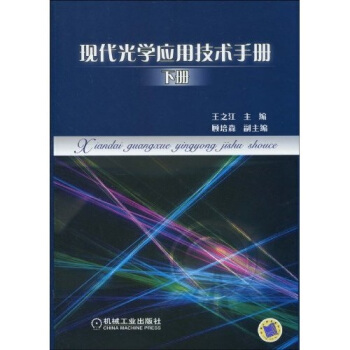

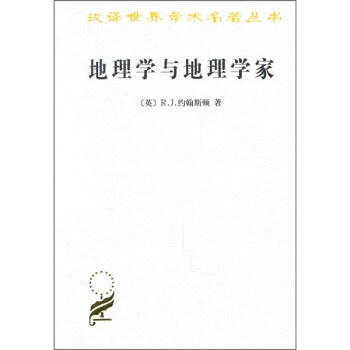
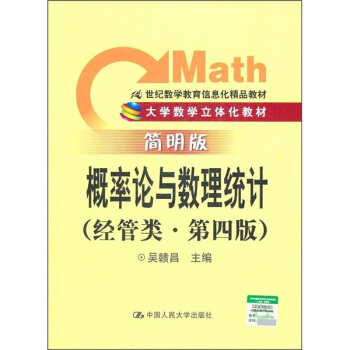

![粒子物理概念(第3版) [The Ideas of Particle Physics:An Introduction for Scientists Third edition] pdf epub mobi 電子書 下載](https://pic.tinynews.org/10914282/4cd9d24a-6c7b-4c93-806f-e006d43d5fca.jpg)

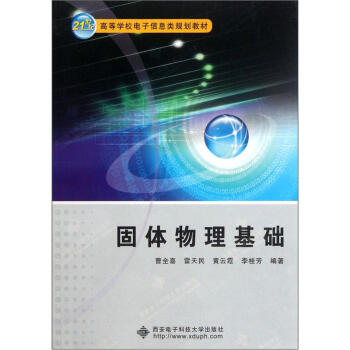


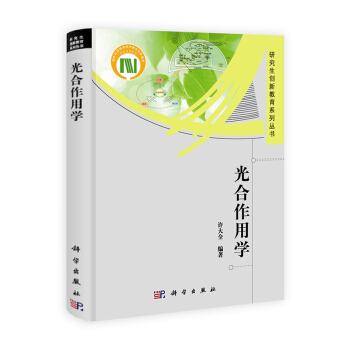

![生物化學與分子生物學 [Biochemistry and Molecular Biology] pdf epub mobi 電子書 下載](https://pic.tinynews.org/11426306/5398fdf2N048684a9.jpg)
